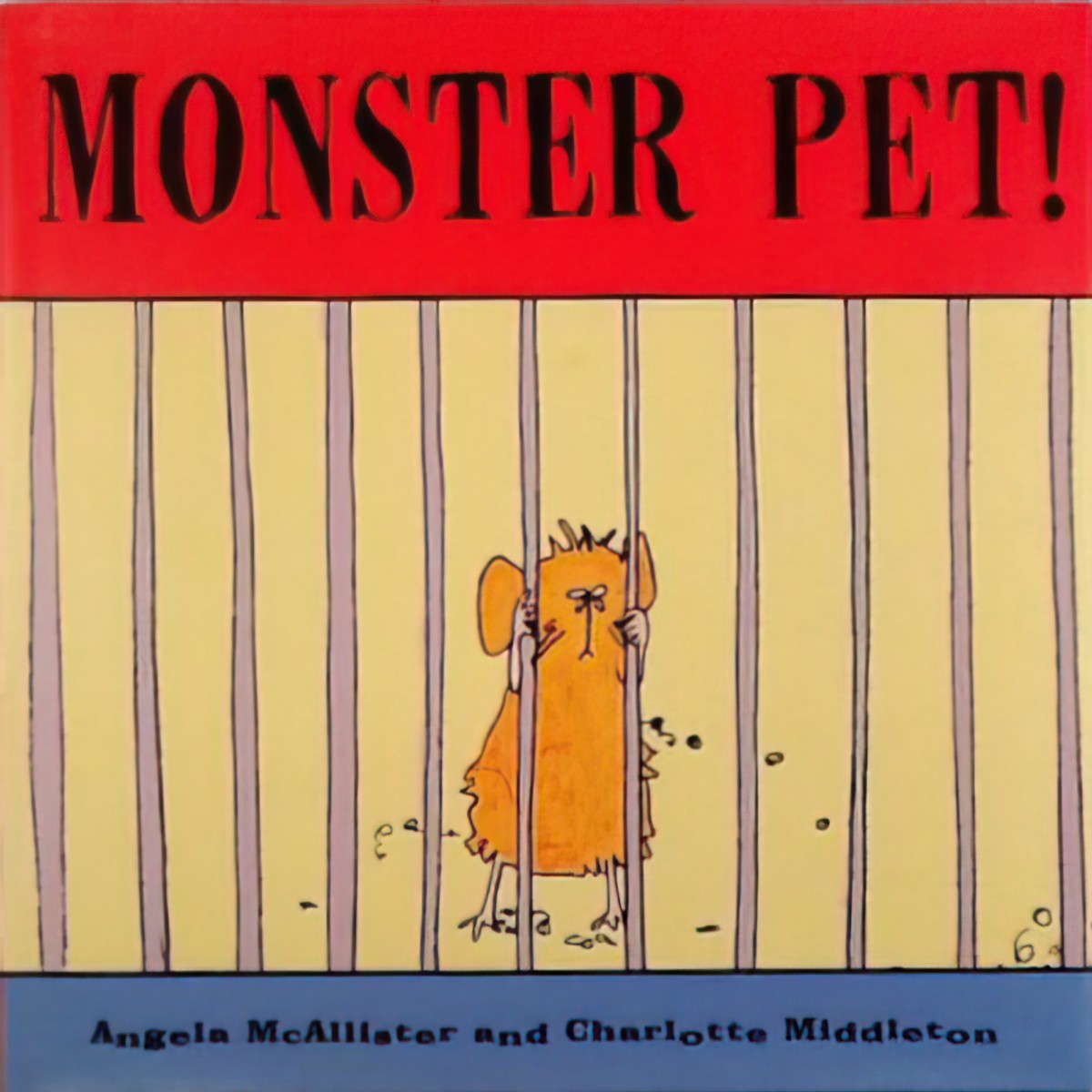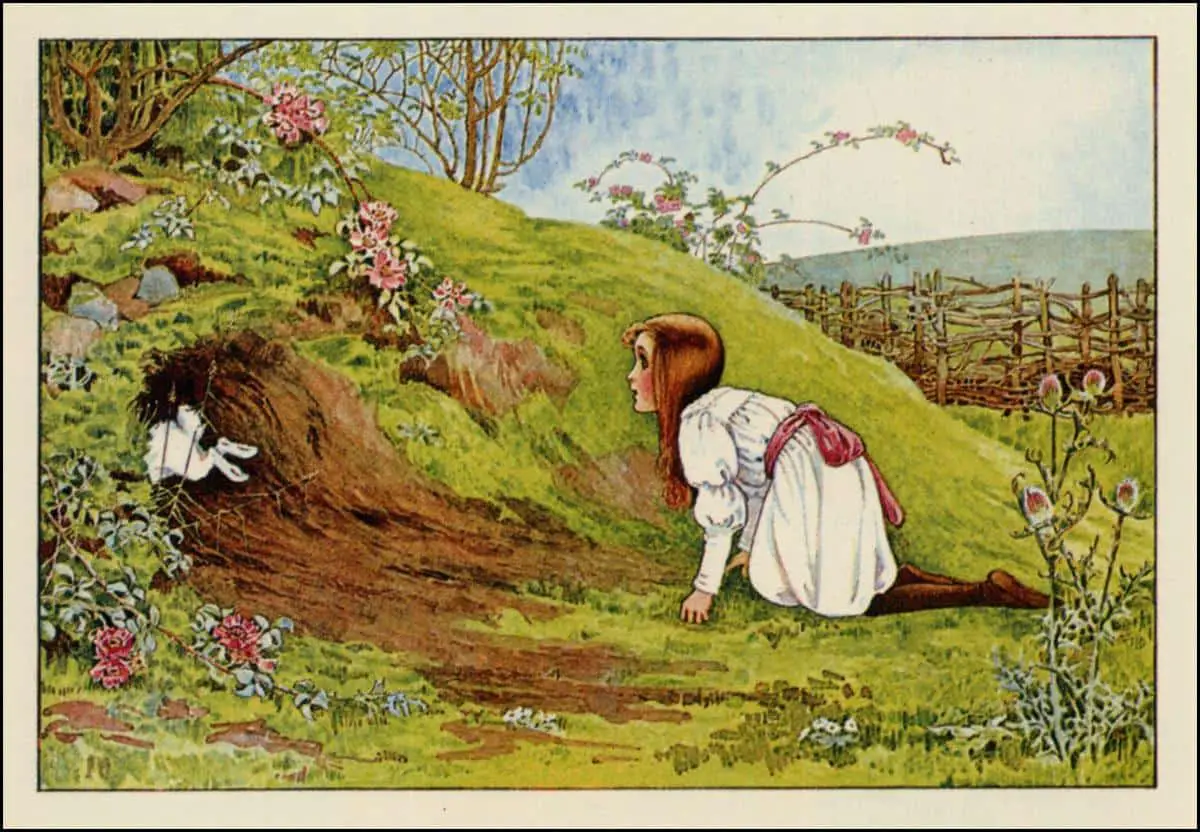-
Zoo by Anthony Browne (1992) Analysis

Zoo is a postmodern picture book written and illustrated by Anthony Browne, first published in 1992.
-
Elephants In Art And Children’s Literature

Behold, various illustrations of elephants.
-
There’s A Crocodile Under My Bed! by Ingrid and Dieter Schubert Analysis

There’s A Crocodile Under My Bed! is a picture book written and illustrated by Ingrid and Dieter Schubert. First published in 1980, that makes this classic forty years old. There are a large number of picture books about creatures lurking under beds, and many similar titles out there. The most widely known is Mercer Meyer’s […]
-
Monster Pet! by McAllister and Middleton Analysis

Monster Pet! is a 2005 picture book written by Angela McAllister and illustrated by Charlotte Middleton. The story is designed to get young readers thinking about the responsibility of caring for a sentient creature. A body swap plot is used to that end, though I suspect more empathy derives from the facial expressions on the poor little locked up mouse…
-
Unappealing Cats In Illustration

Considering how similar cats look in reality, breeding and colour differences aside, it’s surprising how illustrators come up with so many ways of depicting cats in art. Like any other fashion, cat faces have also changed according to era, even though the faces of actual cats have remained… the exact same. How Humans Created Cats: […]
-
Bluey Australian TV Show Storytelling

Remember that time an episode of British cartoon Peppa Pig was taken off air in Australia? It was the episode which taught kids that spiders aren’t scary. Not a lesson Aussie kids need to learn. Well, fast forward a few years and Australian kids now have their own cartoon series reminiscent of Peppa Pig. Bluey […]
-
The Cider Duck by Joan Woodberry Analysis

The Cider Duck (1969) is an Australian picture book written by Joan Woodberry and illustrated by Molly Stephens. ABOUT THE AUTHOR AND ILLUSTRATOR Joan Woodberry (1921-2010) was an influential, widely-travelled Tasmanian feminist whose efforts made women’s lives palpably better in Tasmania. Finding information on Molly Stephens is a little more difficult partly because she was […]
-
Zoomorphism and Chremamorphism

Both personification and anthropomorphism are types of metaphors. But what do you call it when it’s the other way round? i.e., when a human being is compared to an animal by virtue of animal characteristics?
-
The Tale of Mr Jeremy Fisher by Beatrix Potter Analysis

The Tale of Mr. Jeremy Fisher (1906) is one of Beatrix Potter’s more popular stories, and is an excellent example of how to write a sympathetic main character. Publishers had been telling Potter since she wrote it in 1893 for her last nanny’s son that frogs aren’t cute and fluffy enough to warrant main character […]
-
Mrs Tiggy-Winkle by Beatrix Potter Analysis

Beatrix Potter wrote Mrs. Tiggy-Winkle specifically to appeal to girls. She thought that Lucie’s feminine garb, with its emphasis on the lost clothing items (o, calamity!), would appeal to girls especially. Even today, authors and publishers are creating children’s books for the gender binary* e.g. this book will appeal to boys because X; this will […]
-
Rabbits and Hares in Art and Storytelling

Rabbits are strongly associated with babies and early childhood. They appear often in stories and art for children. But what about hares?
-
The Tale of Timmy Tiptoes by Beatrix Potter Analysis

Beatrix Potter was already popular by the time she published The Tale of Timmy Tiptoes (1911). The introduction to our 110th anniversary copy says the tale was created specifically to appeal to a new, American audience, with the inclusion of chipmunks. Unfortunately, Beatrix had never seen a chipmunk in real life. She must have relied […]
-
The Tale of Mr Tod by Beatrix Potter Analysis

The Tale of Mr. Tod by Beatrix Potter (1912) is a child-in-jeopardy crime thriller. See my post on thrillers and also my post on secrets and scams.
-
The Tale of Ginger and Pickles by Beatrix Potter Analysis

The Tale of Ginger and Pickles by Beatrix Potter is a story of utopian, idealised capitalism, first published 1909. This is how we’d all like capitalism to work — small local businesses provide goods and services; those friends providing the best goods and services win out, those ill-suited to small business find other, more suitable […]
